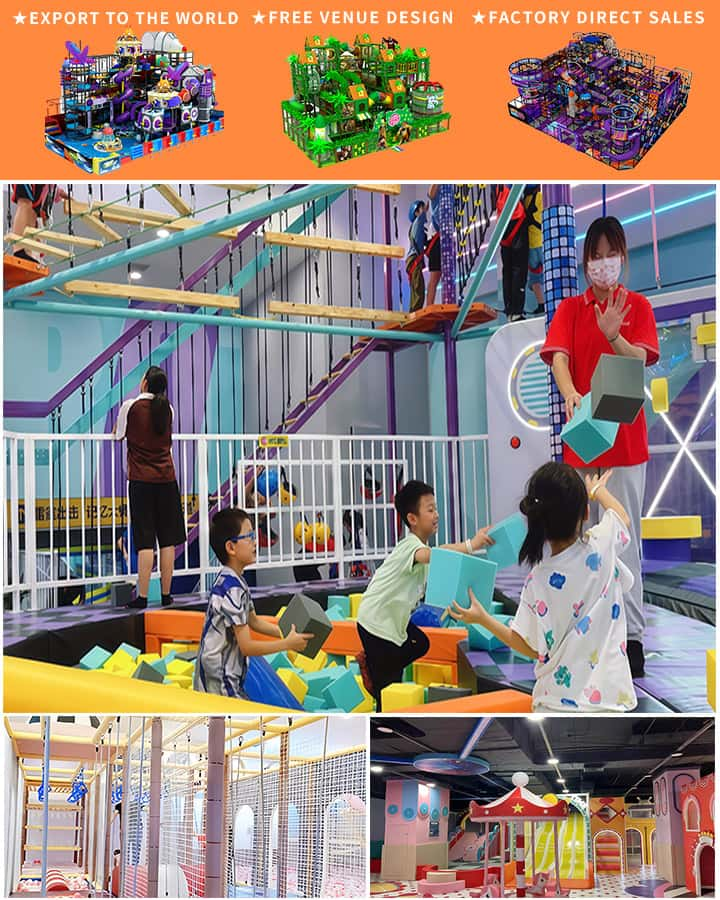Outdoor playground equipment has always been an essential aspect of childhood, providing a space where children can explore, play, and develop various physical and social skills. From swings to slides, climbing frames to merry-go-rounds, these installations are more than just structures; they are the backdrop for countless memories and formative experiences. In this guide, we’ll delve into various types of outdoor playground equipments, their benefits, safety considerations, and how to select the best options for different age groups.
Types of Outdoor Playground Equipments
1. Swings and Slides: Swings and slides are classic pieces of playground equipment that have been enjoyed by generations. Swings help in developing balance and coordination while providing a sense of freedom and excitement. Slides, on the other hand, offer thrilling descents that can boost confidence and spatial awareness. Modern variations include adaptive swings for children with different abilities and multi-lane slides for group play.
2. Climbing Frames: Climbing frames come in various designs, such as jungle gyms,攀爬 walls, and rope climbs. These structures encourage physical fitness, problem-solving skills, and the development of motor skills. They also promote imaginative play, as children often pretend these structures are castles, ships, or trees.
3. See-Saws and Merry-Go-Rounds: See-saws and merry-go-rounds are excellent for teaching cooperation and turn-taking. While see-saws require coordination between two users, merry-go-rounds provide a gentle spinning motion that can be both entertaining and calming for children. These traditional pieces of equipment continue to be popular in modern playgrounds.
4. Sandpits and Water Play Equipment: Sandpits allow children to engage in sensory play, which is crucial for cognitive development. Digging, building sandcastles, and using tools enhance fine motor skills and creativity. Water play equipment, such as sprinklers, fountains, and small pools, offer refreshing fun during hot weather and can teach basic concepts like buoyancy and flow.
5. Interactive Play Structures: Modern playgrounds often feature interactive play structures that incorporate technology or themed elements. These might include musical instruments that produce sound when played, interactive panels that respond to touch, or themed play areas that transport children to different worlds, encouraging imaginative exploration.

Benefits of Playground Equipments
Physical Health: Outdoor playground equipment promotes physical activity, helping combat obesity and related health issues. Running, jumping, climbing, and balancing improve cardiovascular health, muscle strength, and overall fitness.
Social Development: Playgrounds foster social interactions, teaching children how to cooperate, share, and resolve conflicts. Group activities and games help build friendships and enhance communication skills.
Emotional and Mental Well-being: Play reduces stress and anxiety, providing an outlet for emotions and energy. It encourages creativity and imagination, contributing to emotional resilience and mental health.
Safety Considerations
When selecting outdoor playground equipment, safety should always be a top priority. Here are some key factors to consider:
Age Appropriateness: Ensure the equipment matches the child’s developmental stage. Younger children need simpler, safer structures, while older kids can handle more complex and challenging apparatus.
Material Quality: Choose durable materials that can withstand different weather conditions without deteriorating quickly. Non-toxic, weather-resistant materials are ideal.
Installation: Proper installation is crucial to prevent accidents. Ensure the equipment is securely anchored and follows all safety guidelines. Soft landing surfaces, like rubber mats or wood chips, should be used to cushion falls.
Maintenance: Regular maintenance checks are necessary to identify wear and tear. Tighten screws, replace broken parts, and clean the equipment to keep it safe and hygienic.
Selecting the Best Equipment for Different Age Groups
Toddlers (Ages 1-3): For toddlers, focus on low-risk, easy-to-use equipment like small slides, soft play structures, and baby swings. Look for items with rounded edges and non-slip surfaces.
Preschoolers (Ages 3-5): Preschoolers can enjoy slightly more complex structures like low climbing frames, small seesaws, and interactive panels. Bright colors and themed play sets capture their imagination.
School-Aged Children (Ages 6-12): Older children benefit from more physically demanding equipment such as tall climbing walls, high-speed slides, and advanced monkey bars. Incorporating educational elements like puzzle panels or science-themed structures can add an enriching component.
Conclusion
Outdoor playground equipment offers myriad benefits for children’s physical, social, and emotional development. By carefully selecting age-appropriate, safe, and well-maintained equipment, we can create engaging and enriching environments where children can learn, grow, and have fun in equal measure. So go ahead—let the adventures begin on your playground!




